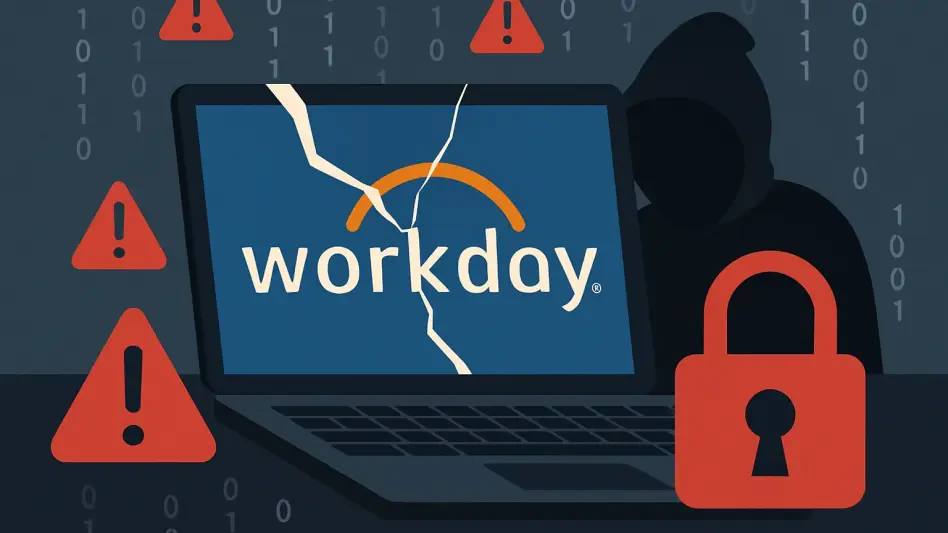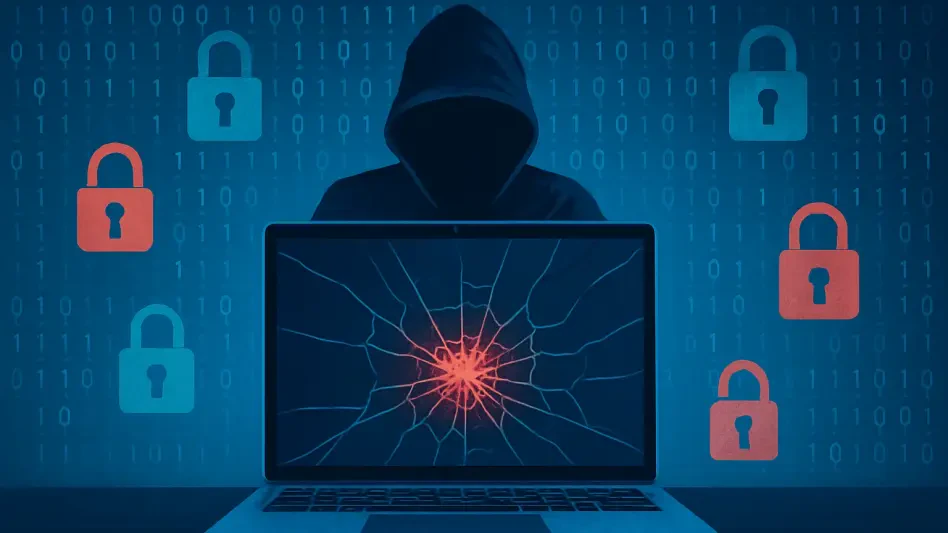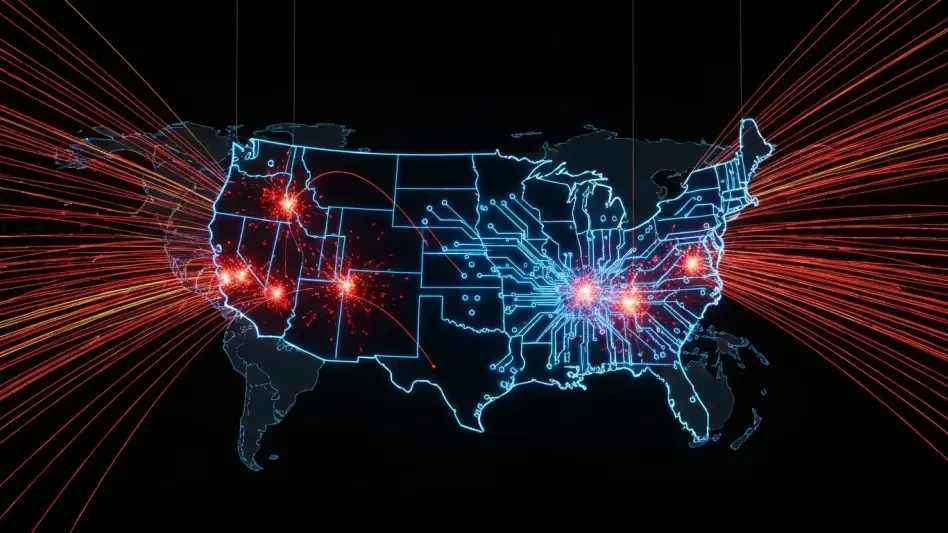In the dynamic world of cyber threats, ransomware looms large as a pressing concern, pushing businesses to reassess traditional disaster recovery approaches. While conventional strategies have typically aimed at addressing basic IT disruptions through routine data backups and recovery plans, they frequently stumble when confronting the complexities of ransomware. The nature of these attacks, characterized by unpredictable intrusion patterns and sophisticated tactics, necessitates a rethink of recovery methodologies. This article delves into why organizations must adopt a specialized cyber incident recovery framework and how persistent challenges—such as compromised backups and threats of malware reinfection—determine current recovery efforts.
Rethinking Traditional Disaster Recovery
Vulnerability of Backup Systems
The cornerstone of traditional disaster recovery methodologies often lies in the regular backup of essential data, an approach that seems increasingly inadequate in the face of modern ransomware threats. Attackers are now honing their tactics, specifically targeting backup systems to undermine an organization’s ability to mount a defense. A staggering 94% of ransomware breaches involve the deliberate compromise of backup data. This vulnerability turns once-reliable recovery methods into liabilities, as organizations may find their data backed up yet simultaneously inaccessible due to encryption or outright deletion by cybercriminals. Such scenarios leave businesses in a state of paralysis, lacking the immediate tools to restore operations effectively.
This systemic risk of backup vulnerability underscores the need for a more comprehensive approach to disaster recovery. Businesses can no longer rely solely on traditional backup strategies and must instead consider implementing advanced protective measures. Embracing technologies like immutable storage solutions, which are resistant to alteration or deletion, could safeguard backups from unauthorized access or tampering. By focusing on protecting backup integrity, organizations can prepare for swift recovery even when faced with sophisticated ransomware attacks.
Challenges of Infected Backups
Ransomware possesses the insidious ability to infiltrate systems undetected for extended periods, complicating recovery efforts significantly. This latent presence implies that subsequent backups might inadvertently capture and store the malware, posing substantial challenges when restoring systems. The recovery process, typically seen as a path to return to normalcy, becomes instead a potential vector for reinfection unless rigorous malware scanning and removal protocols are in place. The risk extends beyond immediate concerns as reinfected systems can lead to prolonged operational downtime and further data loss, exacerbating recovery complexities.
Therefore, a multi-layered approach to safeguarding backups becomes essential. Businesses must incorporate continuous and thorough malware scanning into their regular backup routines, ensuring that each recovery point is devoid of threats. By using sophisticated detection tools, organizations can analyze and verify backup data integrity before initiating recovery, minimizing the risk of unwittingly reintroducing malware. Such an attentive approach to backup hygiene transforms recovery readiness from a theoretical to a practical defense against cyber threats.
Critical Components of Ransomware Recovery
The Role of Cyber Forensics
Cyber forensics plays a pivotal role in unraveling the intricate narrative of ransomware attacks, offering insights far beyond mere restoration of services. Unlike conventional IT failures, where the focus lies on rapidly resuming operations, ransomware demands a meticulous investigation to understand the breach pathology. Forensic examination reveals how the attack occurred, identifying vulnerabilities that facilitated unauthorized access. This thorough scrutiny ensures that the root causes are comprehensively addressed, reducing the likelihood of recurrence while strengthening the overall security posture.
To achieve effective ransomware recovery, organizations often find they must recreate their IT environment in a forensic setting. By doing so, they can encapsulate and analyze attack vectors without relying on potentially compromised systems. These controlled environments facilitate detailed examinations, allowing for the precise identification of malware signatures and attack methodologies. This process not only assists in current recovery efforts but also contributes to the development of improved defensive strategies, enhancing long-term resilience against future threats.
Determining Recovery Scope
Ransomware attacks present an unpredictable and sometimes selective impact on organizational infrastructure, challenging conventional recovery efforts to pinpoint recovery needs accurately. Unlike complete data center failures where damage is total and evident, ransomware might affect specific servers or data sets, requiring detailed assessments to determine the precise extent of the attack. This variability necessitates a tailored recovery approach, accounting for all affected components and ensuring each is addressed effectively to resume normal operations.
This selective impact of ransomware complicates the recovery process, demanding a comprehensive strategy for assessment and restoration. Businesses must establish a prioritization framework that identifies critical systems and databases most vital for operational continuity. By documenting dependencies and interconnections within IT environments, organizations can strategize recovery efforts, ensuring that essential services are restored in an efficient and cohesive manner. This thorough understanding of recovery priorities empowers businesses to navigate the chaos of ransomware events with precision and confidence.
Modernizing Disaster Recovery Strategies
Cyber Incident Recovery Plan
In response to the elaborate threat posed by ransomware, adopting a specialized cyber incident recovery plan becomes imperative for modern enterprises. This proactive approach emphasizes utilizing immutable and off-site backups to avert the primary threat of attack tampering or data destruction. Such backups, stored across secure external locations, are inherently resistant to unauthorized changes, ensuring data integrity is preserved. Moreover, implementing clean-room environments allows organizations to conduct comprehensive forensic investigations, isolating threats without interference while facilitating malware removal from backups.
These structured recovery plans boost an organization’s response to ransomware attacks, instilling a robust layer of preparedness against complex cyber threats. By investing in such protective strategies, businesses can achieve swift resilience and maintain operational stability. Moreover, incorporating digital tracking systems enhances oversight, allowing real-time monitoring and analysis of data inconsistencies, thus serving as an early warning system for potential breaches. This evolution in recovery planning integrates both preventive and reactive measures, fortifying an organization’s defense architecture against emerging cyber adversities.
The Rise of DRaaS
Disaster Recovery as a Service (DRaaS) represents a growing trend among organizations seeking to bolster their cyber resilience while alleviating the internal strain of managing complex recovery operations. DRaaS providers offer their expertise and state-of-the-art infrastructure, ensuring that businesses can focus on core operations rather than being entangled in the intricacies of recovery plan execution. By outsourcing these critical functions, companies gain access to advanced tools and personnel trained specifically to handle ransomware contingencies, reducing both time and resource investments.
The integration of DRaaS into disaster recovery strategies affords businesses the dual benefit of scalability and adaptability. As cyber threats evolve, DRaaS providers continuously update their defenses, aligning recovery services with the current threat landscape. This adaptability ensures that organizations are not burdened with maintaining in-house expertise or technology but instead leverage specialist knowledge to navigate and recover from cyber incidents confidently. The strategic partnership with DRaaS providers translates into a seamless, efficient recovery process, optimizing business continuity efforts for an unpredictable digital era.
Building Cyber Resilience
Shifting Focus to Cyber Readiness
With ransomware attacks now affecting a significant portion of global businesses, the imperative for organizations to pivot from traditional IT recovery tactics to cyber incident-focused strategies has never been more apparent. This shift entails an evolution in how companies construct and execute their disaster recovery plans, integrating elements specifically designed to counteract ransomware’s unique challenges. Prioritizing readiness over response ensures that enterprises are not just reactive to threats but proactively thwart potential ransomware incursions, minimizing disruptions and securing data integrity.
Instituting this paradigm shift involves cultivating a culture of cyber awareness across all levels of operations, instilling best practices and continually updating policies to reflect the latest threat intelligence. Companies need to embrace continuous training and readiness drills, ensuring that personnel are equipped to respond efficiently to ransomware scenarios. This forward-thinking approach places a premium on adaptability, instilling resilience that transcends immediate recovery and extends towards sustained security vigilance and business continuity.
Prioritizing Resilience
In today’s ever-evolving landscape of cyber threats, ransomware stands out as a significant challenge, urging businesses to revisit and update their traditional disaster recovery plans. Conventional strategies have usually focused on addressing basic IT disruptions via routine backups and established recovery plans. However, these approaches often fall short when faced with the complexities that ransomware presents. Ransomware attacks are known for their unpredictable infiltration methods and intricate tactics, demanding a new approach to recovery strategies. This article explores the necessity for organizations to embrace a specialized cyber incident recovery framework, emphasizing the persistent challenges that shape current recovery efforts, including compromised backup systems and the looming threats of malware reinfection. As these cyber threats continue to advance, businesses must prioritize developing adaptive and resilient strategies to ensure effective recovery and minimize operational disruptions in the face of sophisticated attacks.








